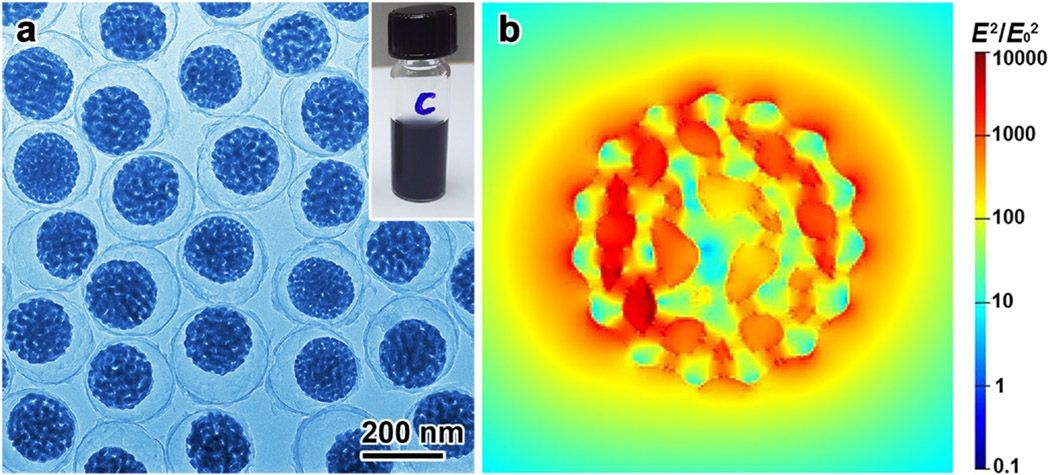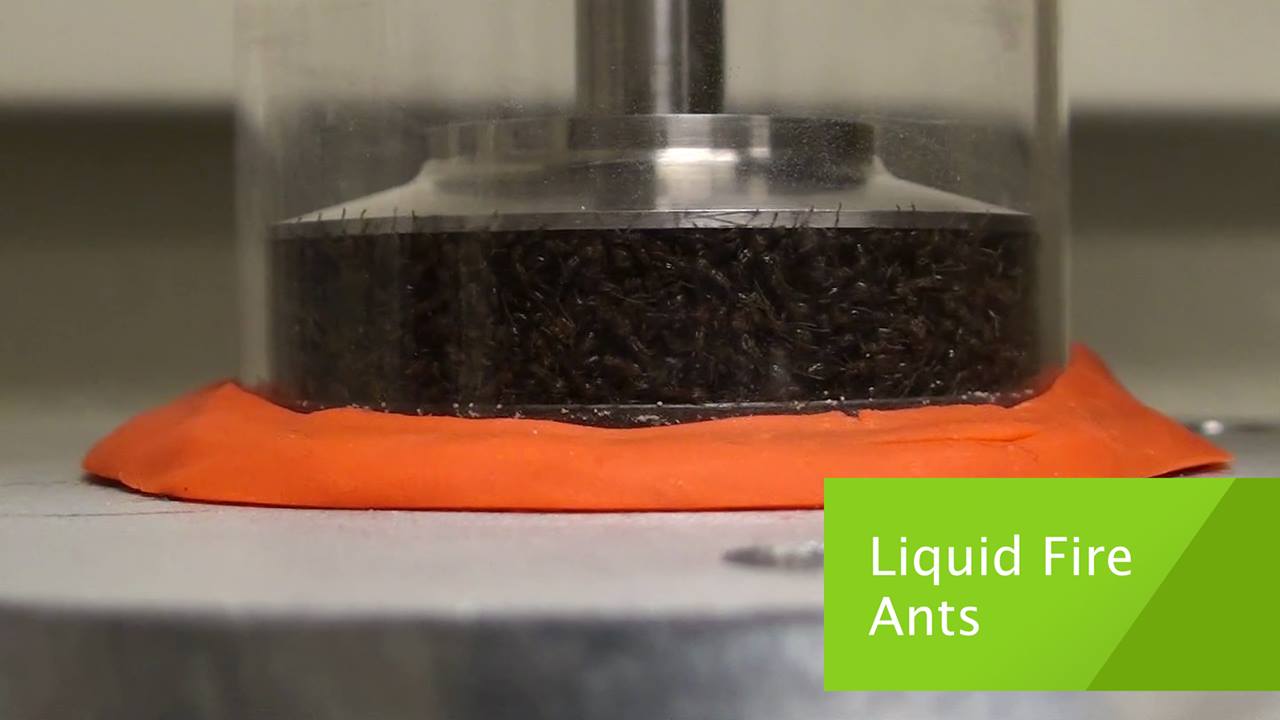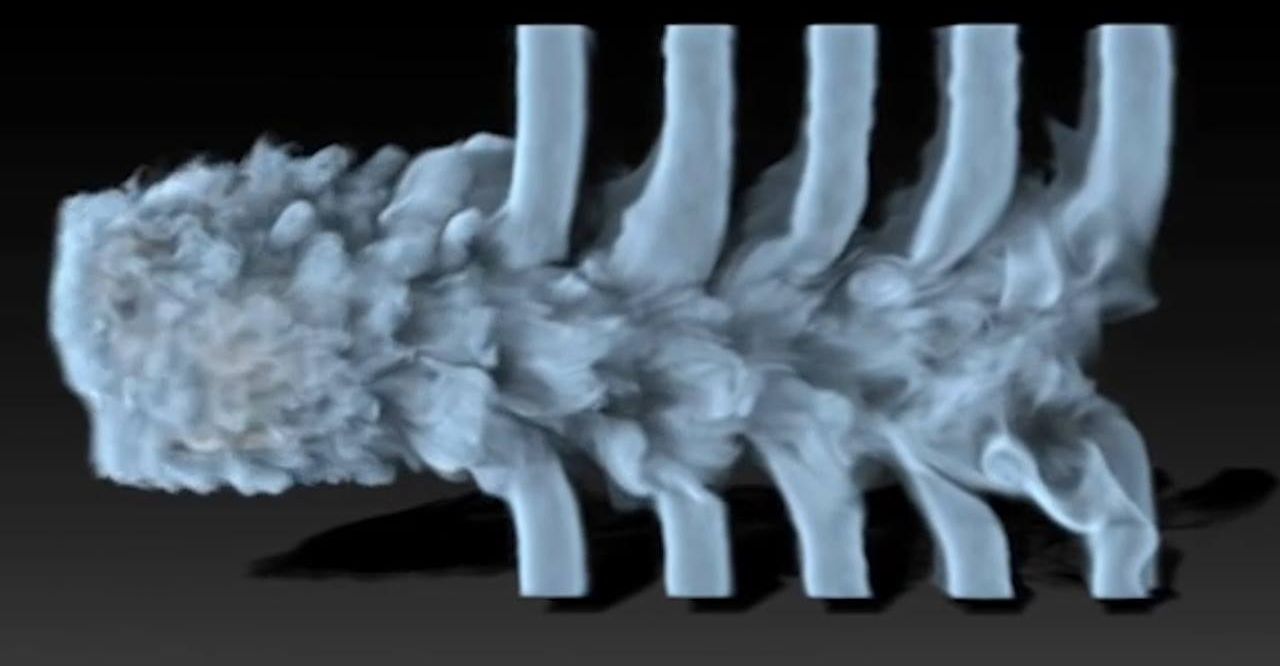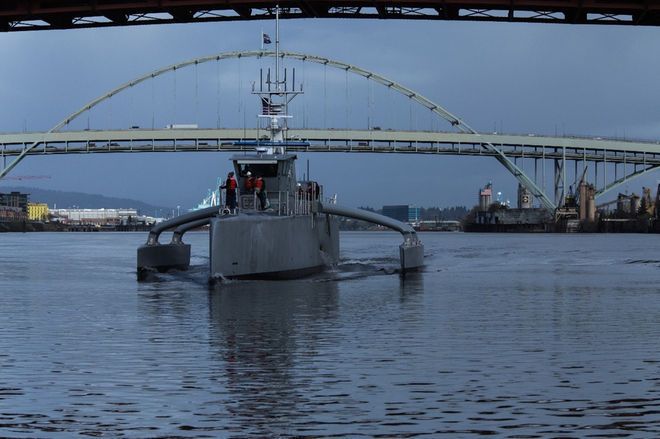Page 10970
Aug 4, 2016
Porous plasmonic nanoparticles for surface-enhanced Raman scattering applications
Posted by Karen Hurst in category: particle physics
A novel strategy is used to synthesize porous gold-silver alloy nanospheres encased in ultrathin silica shells that can act as highly sensitive single-particle probes.

Gold (Au) and silver (Ag) nanoparticles are typical plasmonic nanoparticles that exhibit an intense electromagnetic field in their proximity when they are irradiated by incident light. Within these fields—known as ‘hotspots’—the Raman scattering of molecules can be magnified by many orders of magnitude (depending on the intensity of the local electric field). In this so-called surface-enhanced Raman scattering (SERS) phenomenon,1 the Raman scattering signals contain information relating to the bond vibrations and thus provide ‘signatures’ of the molecules (which enables their spectroscopic detection). In the pursuit of high-sensitivity SERS analyses, it is therefore highly desirable to specifically construct hotspots.
Aug 4, 2016
Carbon Nanotube “Stitches” Strengthen Composites
Posted by Karen Hurst in categories: nanotechnology, transportation
The newest Airbus and Boeing passenger jets flying today are made primarily from advanced composite materials such as carbon fiber reinforced plastic — extremely light, durable materials that reduce the overall weight of the plane by as much as 20 percent compared to aluminum-bodied planes. Such lightweight airframes translate directly to fuel savings, which is a major point in advanced composites’ favor.
But composite materials are also surprisingly vulnerable: While aluminum can withstand relatively large impacts before cracking, the many layers in composites can break apart due to relatively small impacts — a drawback that is considered the material’s Achilles’ heel.
Now MIT aerospace engineers have found a way to bond composite layers in such a way that the resulting material is substantially stronger and more resistant to damage than other advanced composites. Their results are published this week in the journal Composites Science and Technology.
Continue reading “Carbon Nanotube ‘Stitches’ Strengthen Composites” »
Aug 4, 2016
Peter Thiel Wants Young Blood. Do You Want Young Blood?
Posted by Karen Hurst in category: biotech/medical
Aug 4, 2016
How Scientists Plan to Grow Cities Out of Living Organisms
Posted by Sean Brazell in categories: bioengineering, biotech/medical, education, environmental, robotics/AI, space travel

Imagine a future where there is no need to cut down a tree and and reshape that raw material into a chair or table. Instead, we could grow our furniture by custom-engineering moss or mushrooms. Perhaps glowing bacteria will light our cities, and we’ll be able to bring back extinct species, or wipe out Lyme disease—or maybe even terraform Mars. Synthetic biology could help us accomplish all that, and more.
That’s the message of the latest video in a new mini-documentary Web series called Explorations, focusing on potentially transformative areas of scientific research: genomics, artificial intelligence, neurobiology, transportation, space exploration, and synthetic biology. It’s a passion project of entrepreneur Bryan Johnson, founder of OS Fund and the payments processing company Braintree.
Continue reading “How Scientists Plan to Grow Cities Out of Living Organisms” »
Aug 4, 2016
I stopped by the NYC office today and chatted with veteran science writer John Horgan live on their Facebook page about transhumanism and my campaign
Posted by Zoltan Istvan in categories: government, robotics/AI, science, transhumanism

We covered lots of topics:
Live conversation with Zoltan Istvan and John Horgan about transhumanism, AI in government and preparing for the robotic age. Post your questions in the comments below.
Aug 4, 2016
This virtual liquid simulator is so mesmerizing
Posted by Shailesh Prasad in category: futurism
Aug 4, 2016
These disasters are inevitable if Google becomes Obsolete
Posted by Karen Hurst in categories: futurism, internet
This article is hilarious! If Google ever becomes obsolete it will do so because a new tech player with new technology took over. Too say the world will collapse or panic will happen is not reality. Anyone who remembers DEC/ Digital Corporation, WANG, etc. will tell you that a tech company often becomes obsolete when the masses / users drop the company’s tech for another competitor; and this process typically takes a few years of decline when it happens.
In this time of the internet when we have a vast amount of information available that we can easily Google to find out. This search engine has proven itself to be the most efficient tool for the entire humanity. But imagine what will happen if Google becomes obsolete or shuts down entirely at some point in the future.
Considering all the vast ranges of functionalities Google can perform, I believe the aftermath will be devastating. In fact, Google did shut down once, for a few minutes and the whole world turned upside-down.
Continue reading “These disasters are inevitable if Google becomes Obsolete” »
Aug 4, 2016
US Military’s Robotic Submarine Hunter Completes First Tests at Sea
Posted by Karen Hurst in categories: military, robotics/AI
Another major leap for science & maybe for mankind (depends on the mission)?.
http://www.livescience.com/55662-darpa-submarine-hunter-completes-tests.html
The U.S. is set to launch an unmaned submarine hunting ship in 2018.
Continue reading “US Military’s Robotic Submarine Hunter Completes First Tests at Sea” »
















